Characterization of Wear and Physical Properties of Pawpaw–Glass Fiber Hybrid Reinforced Epoxy Composites for Structural Application
Abstract
1. Introduction
2. Materials and Methods
3. Results and Discussion
3.1. Wear Behavior
3.2. Curing Time
3.3. Thermal Conductivity
3.4. Moisture Absorption in Soil and Water Comparison
4. Conclusions
Author Contributions
Funding
Acknowledgments
Conflicts of Interest
References
- Cheng, L.; Karbhari, V.M. New bridge systems using FRP composites and concrete: A state-of-the-art review. Prog. Struct. Eng. Mater. 2006, 8, 143–154. [Google Scholar] [CrossRef]
- Mao, K.; Greenwood, D.; Ramakrishnan, R.; Goodship, V.; Shrouti, C.; Chetwynd, D.; Langlois, P. The wear resistance improvement of fibre reinforced polymer composite gears. Wear 2019, 426, 1033–1039. [Google Scholar] [CrossRef]
- Boegler, O.; Kling, U.; Empl, D.; Isikveren, A. Potential of sustainable materials in wing structural design. In Proceedings of the Deutscher Luft- und Raumfahrtkongress, München, Germany, 16–18 September 2014; pp. 16–18. [Google Scholar]
- Arockiam, N.J.; Jawaid, M.; Saba, N. Sustainable bio composites for aircraft components. In Sustainable Composites for Aerospace Applications; Woodhead Publishing: Sawston, UK; Cambridge, UK, 2018; pp. 109–123. [Google Scholar]
- Fan, S.; Yang, C.; He, L.; Du, Y.; Krenkel, W.; Greil, P.; Travitzky, N. Progress of ceramic matrix composites brake materials for aircraft application. Rev. Adv. Mater. Sci. 2016, 44, 313–325. [Google Scholar]
- Kumar, A.; Lal, K.G.; Anantha, S.V. Design and Analysis of a Carbon Composite Propeller for Podded Propulsion. In Proceedings of the Fourth International Conference in Ocean Engineering (ICOE2018), Chennai, India, 18–21 February 2018; Lecture Notes in Civil Engineering 22. Springer: Berlin/Heidelberg, Germany, 2018. [Google Scholar]
- Verma, D.; Goh, K.L. Natural fiber-reinforced polymer composites. In Biomass, Biopolymer-Based Materials, and Bioenergy: Construction, Biomedical, and Other Industrial Applications; Woodhead Publishing: Sawston, UK; Cambridge, UK, 2019; pp. 51–73. [Google Scholar]
- Qamhia, I.I.; Shams, S.S.; El-Hajjar, R.F. Quasi-isotropic triaxially braided cellulose-reinforced composites. Mech. Adv. Mater. Struct. 2015, 22, 988–995. [Google Scholar] [CrossRef]
- Arrakhiz, F.; El Achaby, M.; Malha, M.; Bensalah, M.; Fassi-Fehri, O.; Bouhfid, R. Mechanical and thermal properties of natural fibers reinforced polymer composites: Doum/low density polyethylene. Mater. Des. 2013, 43, 200–205. [Google Scholar] [CrossRef]
- Thakur, V.K.; Thakur, M.K. Processing and characterization of natural cellulose fibers/thermoset polymer composites. Carbohydr. Polym. 2014, 109, 102–117. [Google Scholar] [CrossRef]
- Alireza, S.; Ghasemian, A. Water Absorption and Thickness Swelling Behavior of Polypropylene Reinforced with Hybrid Recycled Newspaper and Glass Fiber. Appl. Compos. Mater. 2010, 17, 183–193. [Google Scholar]
- Ou, Y.; Zhu, D.; Zhang, H.; Huang, L.; Yao, Y.; Li, G.; Mobasher, B. Mechanical characterization of the tensile properties of glass fiber and its reinforced polymer (GFRP) composite under varying strain rates and temperatures. Polymers 2016, 8, 196. [Google Scholar] [CrossRef]
- Asi, O. Mechanical properties of glass-fiber reinforced epoxy composites filled with Al2O3 particles. J. Reinf. Plast. Compos. 2008, 28, 2861–2867. [Google Scholar] [CrossRef]
- Singla, M.; Chawla, V. Mechanical properties of epoxy resin-fly ash composite. J. Min. Mater. Charact. Eng. 2010, 9, 199–210. [Google Scholar] [CrossRef]
- Warbhe, N.O.; Shrivastava, R.; Adwani, P.S. Mechanical properties of kevlar/jute reinforced epoxy composite. Int. J. Innov. Res. Sci. Eng. Technol. 2016, 5, 16407–16418. [Google Scholar]
- Pegoretti, A.; Fabbri, E.; Migliaresi, C.; Pilati, F. Intraply and interply hybrid composites based on E-glass and poly (vinyl alcohol) woven fabrics: Tensile and impact properties. Polym. Int. 2004, 53, 1290–1297. [Google Scholar] [CrossRef]
- Oladele, I.O.; Agbabiaka, O.G.; Adediran, A.A.; Akinwekomi, A.D.; Balogun, A.O. Structural performance of poultry eggshell derived hydroxyapatite based high density polyethylene bio-composites. Heliyon 2019, 5, 1–7. [Google Scholar] [CrossRef]
- Daramola, O.O.; Akinwekomi, A.D.; Adediran, A.A.; Akindote-White, O.; Sadiku, E.R. Mechanical performance and water uptake behaviour of treated bamboo fibre-reinforced high-density polyethylene composites. Heliyon 2019, 5, 1–6. [Google Scholar] [CrossRef] [PubMed]
- Oladele, I.O.; Adediran, A.A.; Akinwekomi, A.D.; Adara, P.P. Mathematical models for evaluating the influence of degradation on the tensile and flexural properties of palm kernel shell ash/epoxy composites. Mater. Technol. 2019, 53, 763–769. [Google Scholar] [CrossRef]
- Oladele, I.O.; Omotoyinbo, J.A.; Adewara, J.O.T. Investigating the Effect of Chemical Treatment on the Constituents and Tensile Properties of Sisal Fibre. J. Miner. Mater. Charact. Eng. 2010, 9, 569–582. [Google Scholar] [CrossRef]
- Shalwan, A.; Yousif, B.F. Influence of date palm fibre and graphite filler on mechanical and wear characteristics of epoxy composites. Mater. Des. 2014, 59, 264–273. [Google Scholar] [CrossRef]
- Vina, J.; Garcia, M.A.; Castrillo, M.A.; Vina, I.; Arguelles, A. Wear behavior of a Glass Fiber-Reinforced PEI Composite. J. Thermoplast. Compos. Mater. 2008, 21, 279–286. [Google Scholar] [CrossRef]
- Jai, I.P.S.; Sehijpal, S.; Vikas, D. Effect of Curing Temperature on Mechanical Properties of Natural Fiber Reinforced Polymer Composites. J. Nat. Fibers 2018, 15, 687–696. [Google Scholar]
- Ramesh, M.; Sri Ananda Atreya, T.; Aswin, U.S.; Eashwar, H.; Deepa, C. Processing and mechanical property evaluation of banana fiber reinforced polymer composites. Procedia Eng. 2014, 97, 563–572. [Google Scholar] [CrossRef]
- Srinivasan, V.S.; Rajendra Boopathy, S.; Sangeetha, D.; Vijaya Ramnath, B. Evaluation of mechanical and properties of banana–flax based natural fibre composite. Mater. Des. 2014, 60, 620–627. [Google Scholar] [CrossRef]
- Wang, Z.L. Self-powered nanosensors and nanosystems. J. Adv. Mater. 2012, 24, 280–285. [Google Scholar] [CrossRef] [PubMed]
- Han, C.; Li, Z.; Dou, S. Recent progress in thermoelectric materials. Chin. Sci. Bull. 2014, 59, 2073–2091. [Google Scholar] [CrossRef]
- Chen, H.; Ginzburg, V.V.; Yang, J.; Yang, Y.; Liu, W.; Huang, Y.; Du, L.; Chen, B. Thermal conductivity of polymer-based composites: Fundamentals and applications. Prog. Polym. Sci. 2016, 59, 41–85. [Google Scholar] [CrossRef]
- Artid, P.; Manaskorn, R.; Methi, W.; Watanachai, S. Potential Use of Plastic Wastes for Low Thermal Conductivity Concrete. Materials 2018, 11, 1938. [Google Scholar]
- Sanjeevamurthy, G.C.; Srinivas, G.R. Sisal/coconut coir natural fibers-epoxy composites: Water absorption and mechanical properties. Int. J. Eng. Innov. Technol. 2014, 2, 166–170. [Google Scholar]
- Bhaskar, J.; Singh, V.K. Water absorption and compressive properties of coconut shell particle reinforced-epoxy composite. J. Mater. Environ. Sci. 2013, 4, 113–118. [Google Scholar]
- Oladele, I.O.; Abegunde, O.O.; Masud, A.O. Flexural, water absorption and wear responses of green composites from bio-resources. Afr. J. Sci. Technol. Innov. Dev. 2018, 10, 1–6. [Google Scholar] [CrossRef]
- Adediran, A.A.; Alaneme, K.K.; Oladele, I.O.; Akinlabi, E.T. Structural Characterization of Silica based Carbothermal Derivatives of Rice Husk. Procedia Manuf. 2019, 35, 436–441. [Google Scholar] [CrossRef]
- Faola, A.E.; Oladele, I.O.; Adewuyi, B.O.; Oyetunji, A. Development of Biodegradable High Density Polyethylene Composite for Structural Application. Ann. Fac. Eng. Hunedoara-Int. J. Eng. 2019, 2, 37–44. [Google Scholar]
- Oladele, I.O.; Akinwekomi, A.D.; Agbabiaka, O.G.; Oladejo, M.O. Influence of Biodegradation on the tensile and Wear Resistance Properties of Bio-Derived CaCO3/Epoxy Composites. J. Polym. Res. 2019, 26, 1–9. [Google Scholar] [CrossRef]
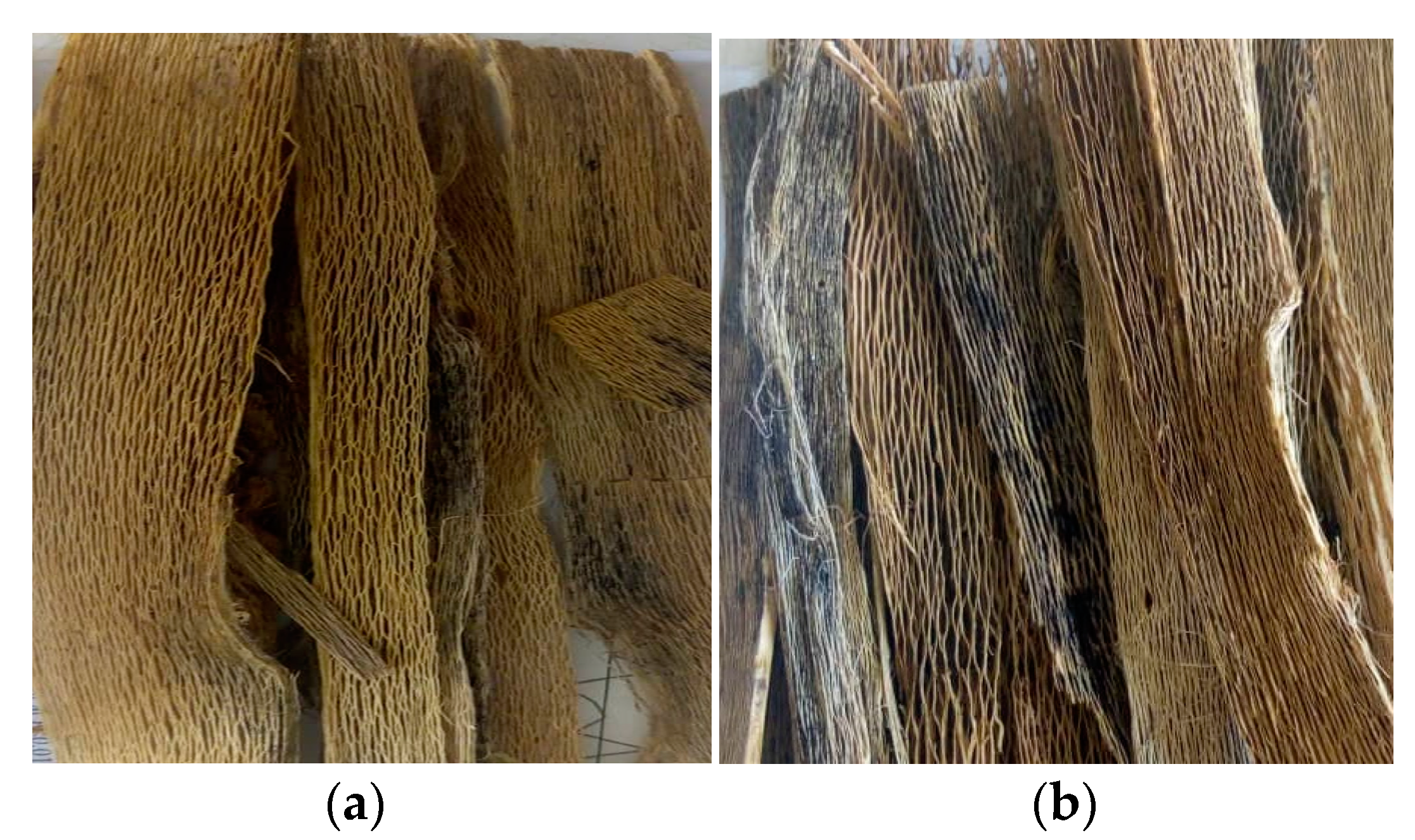
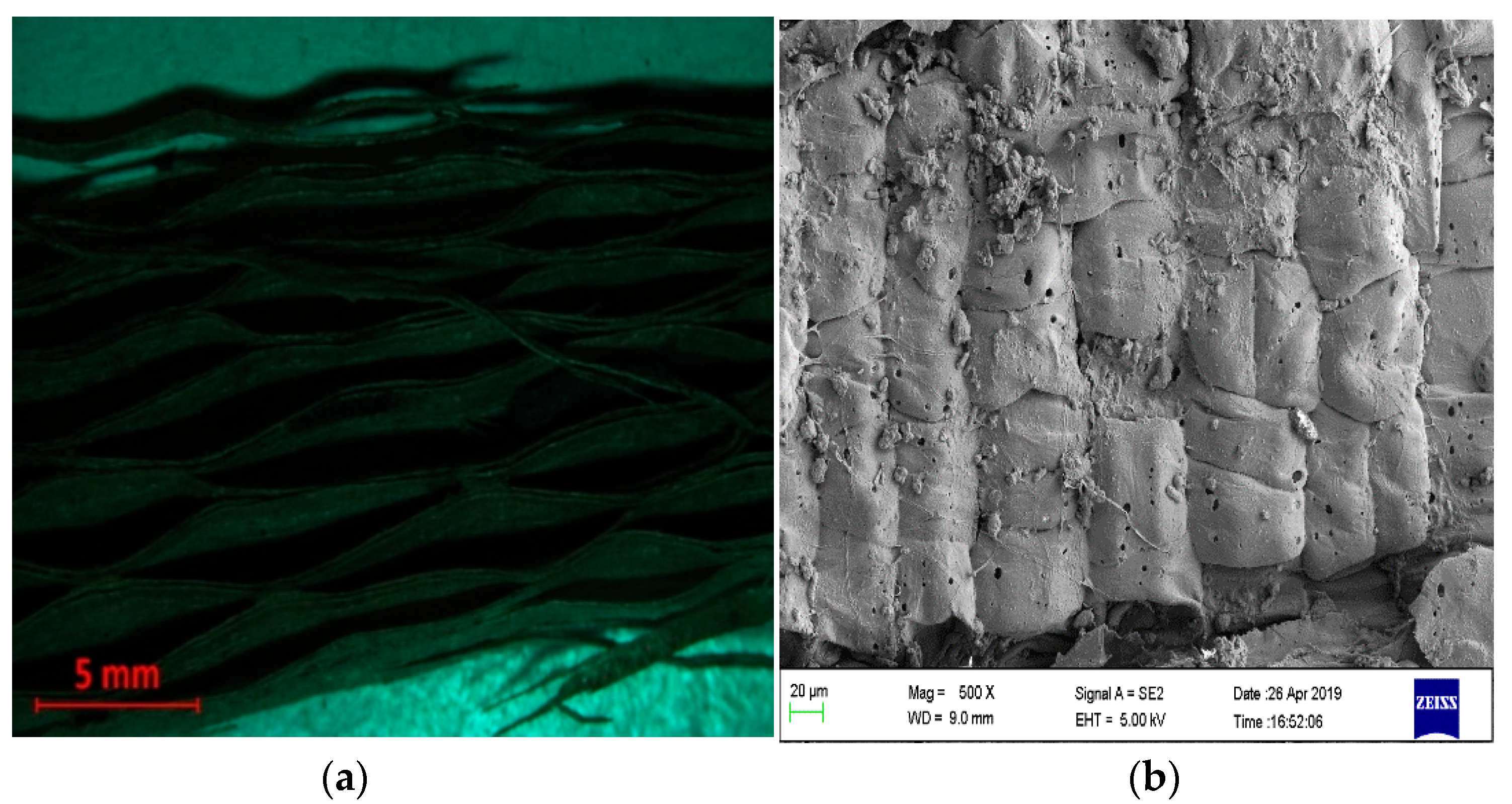
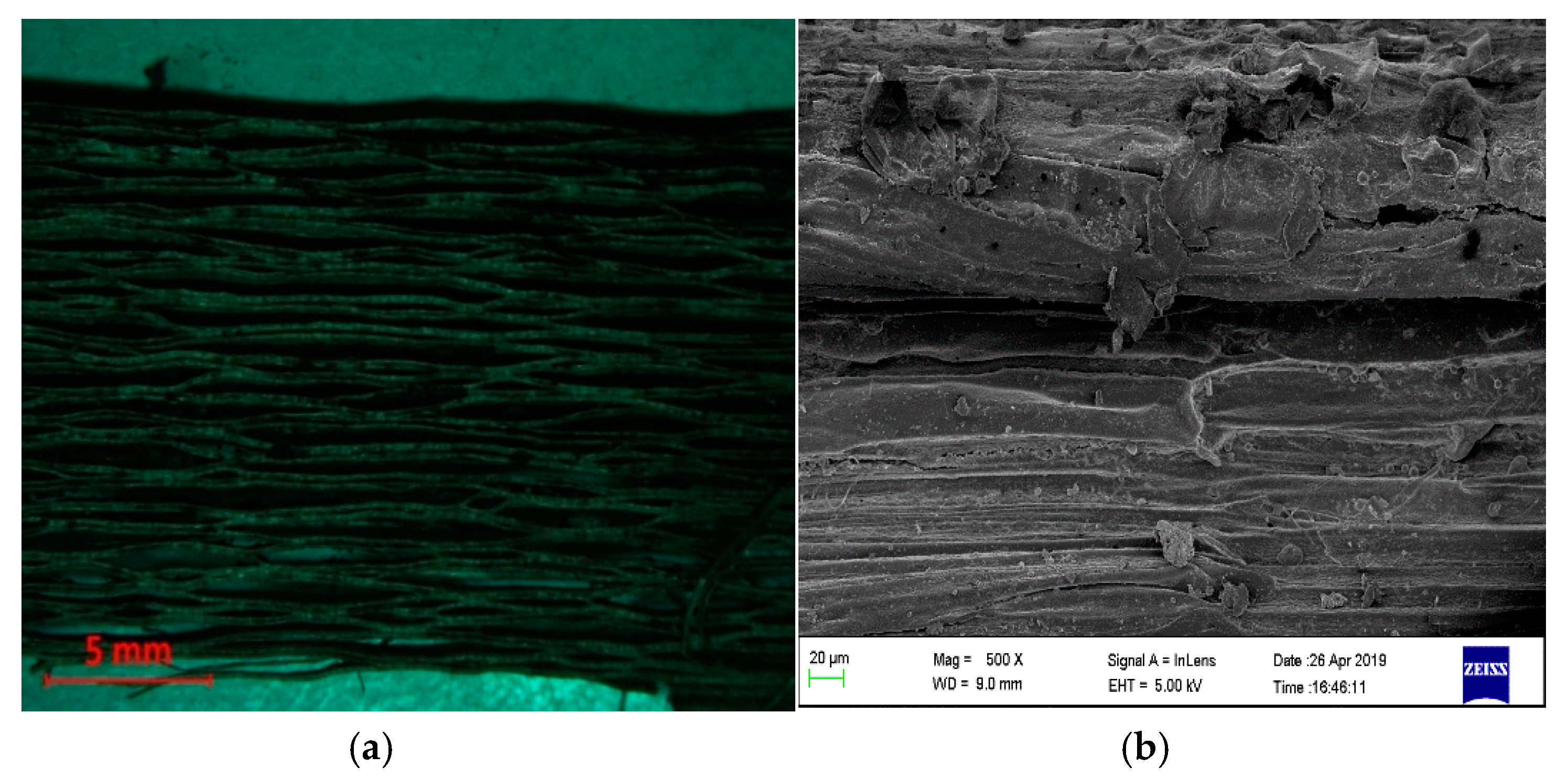
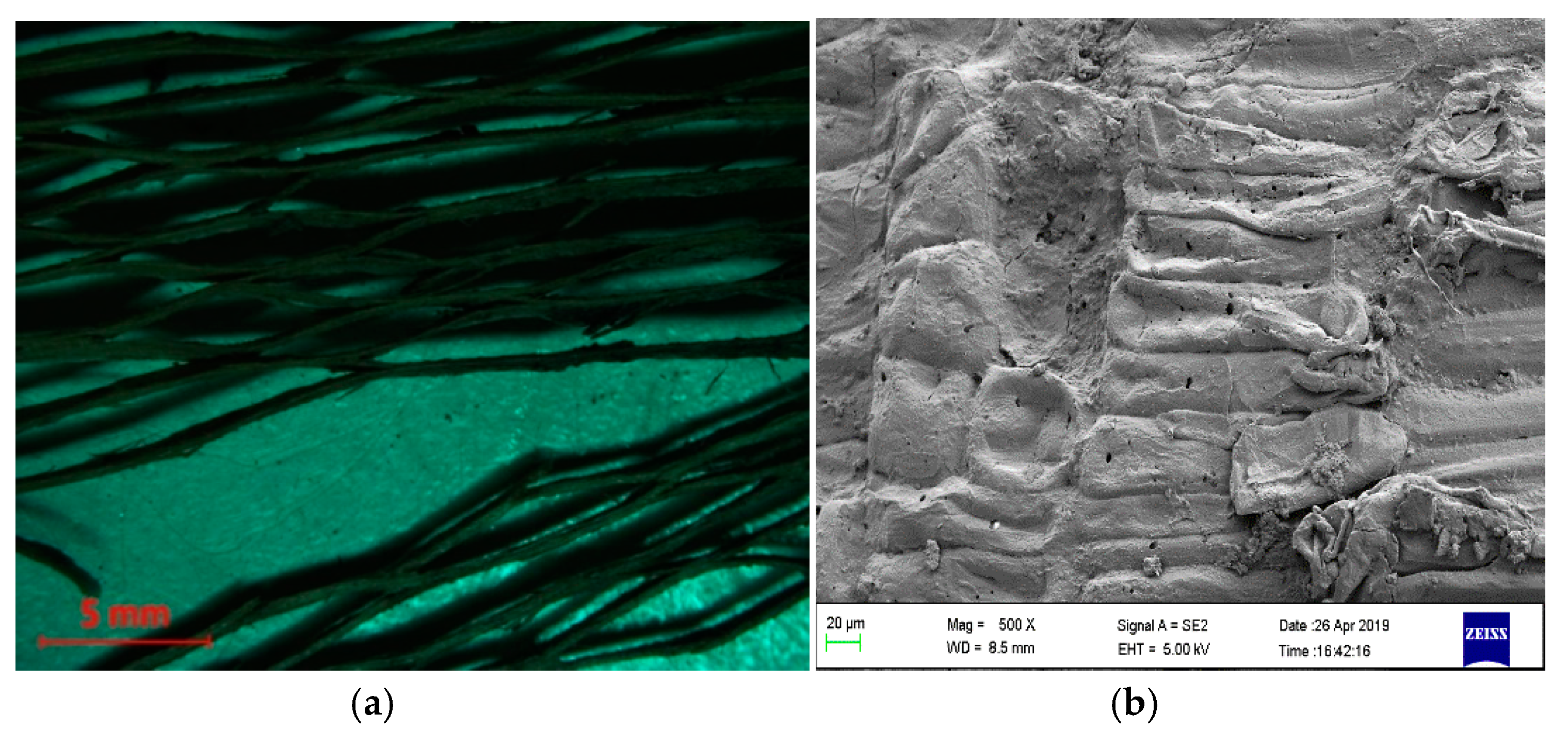
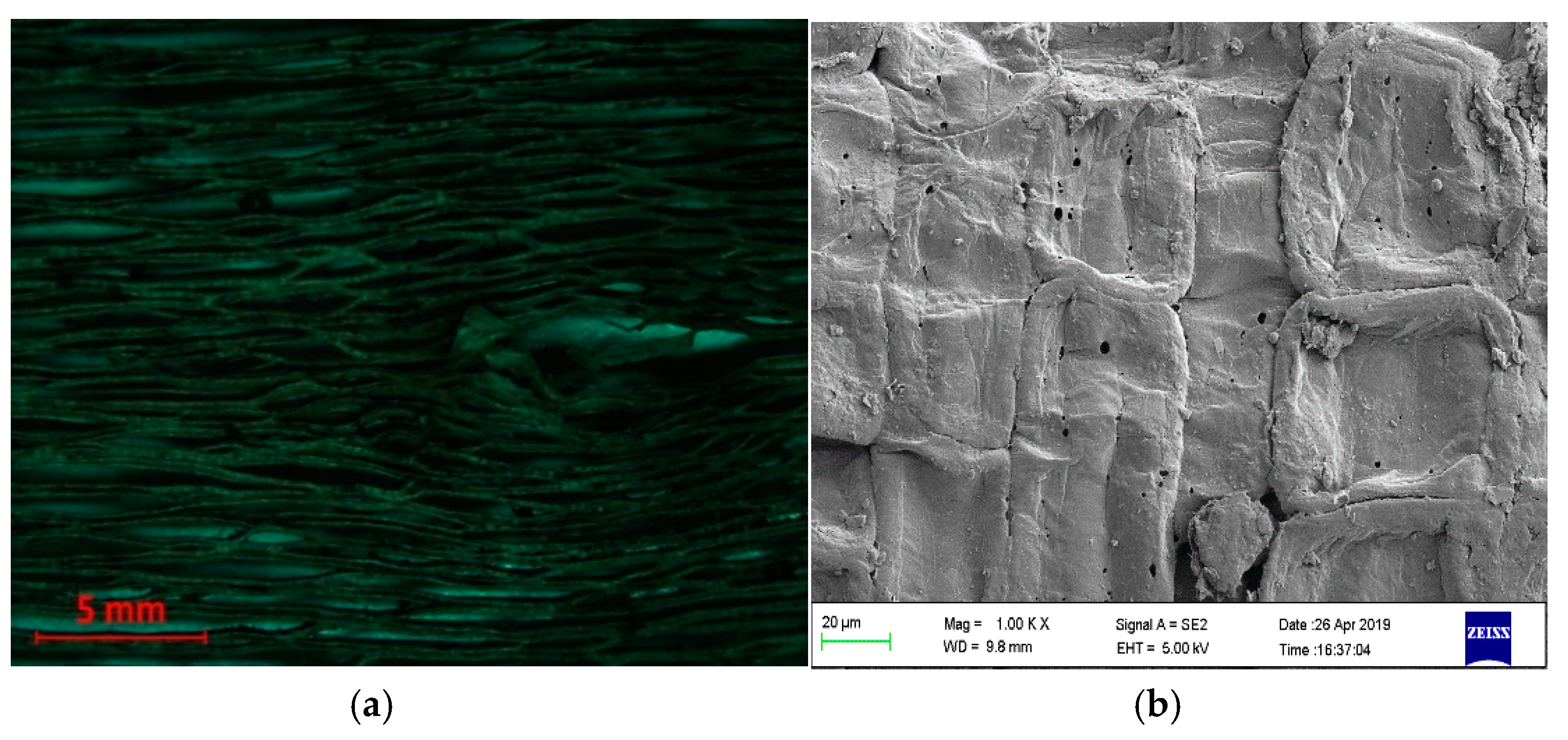
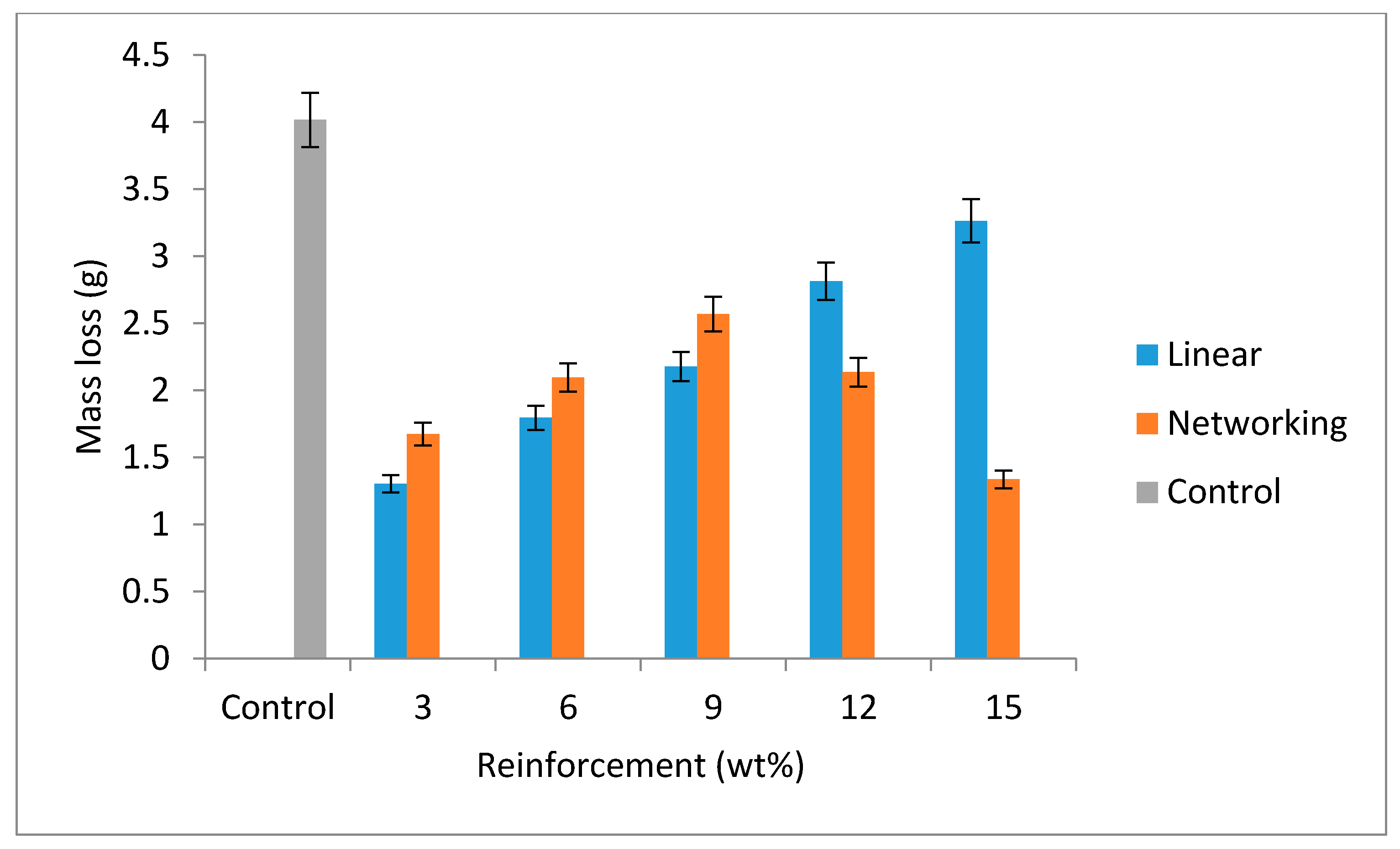
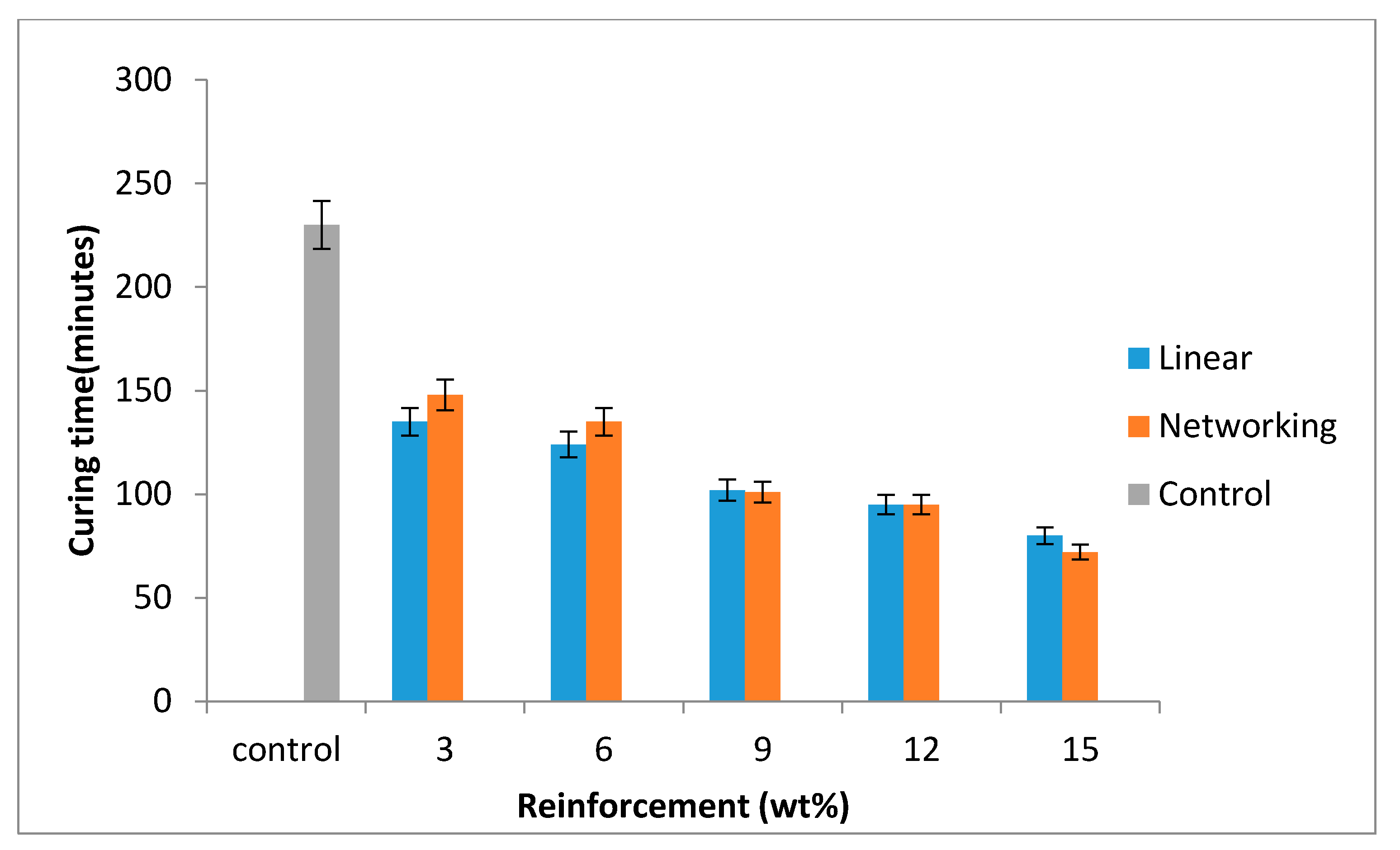
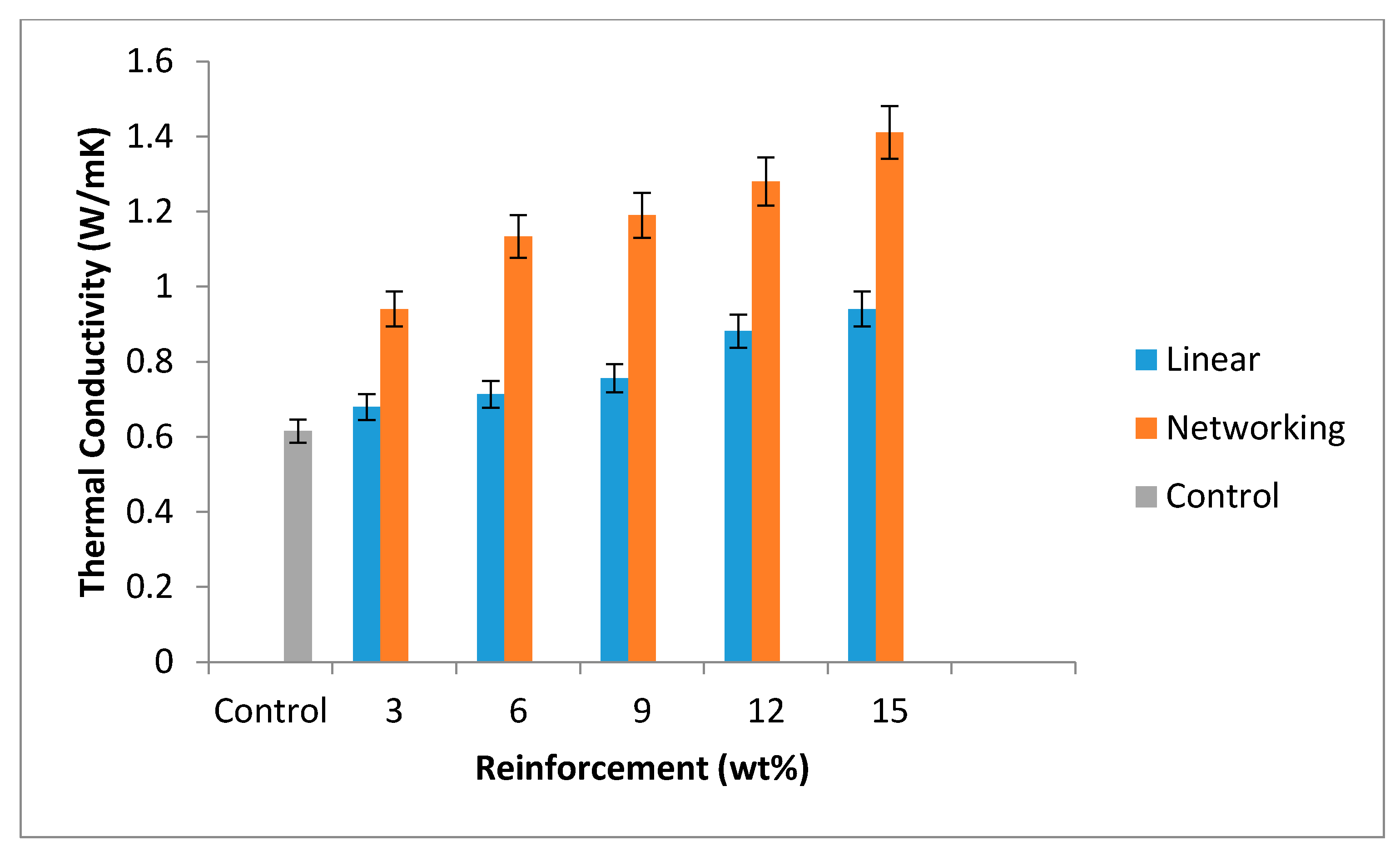
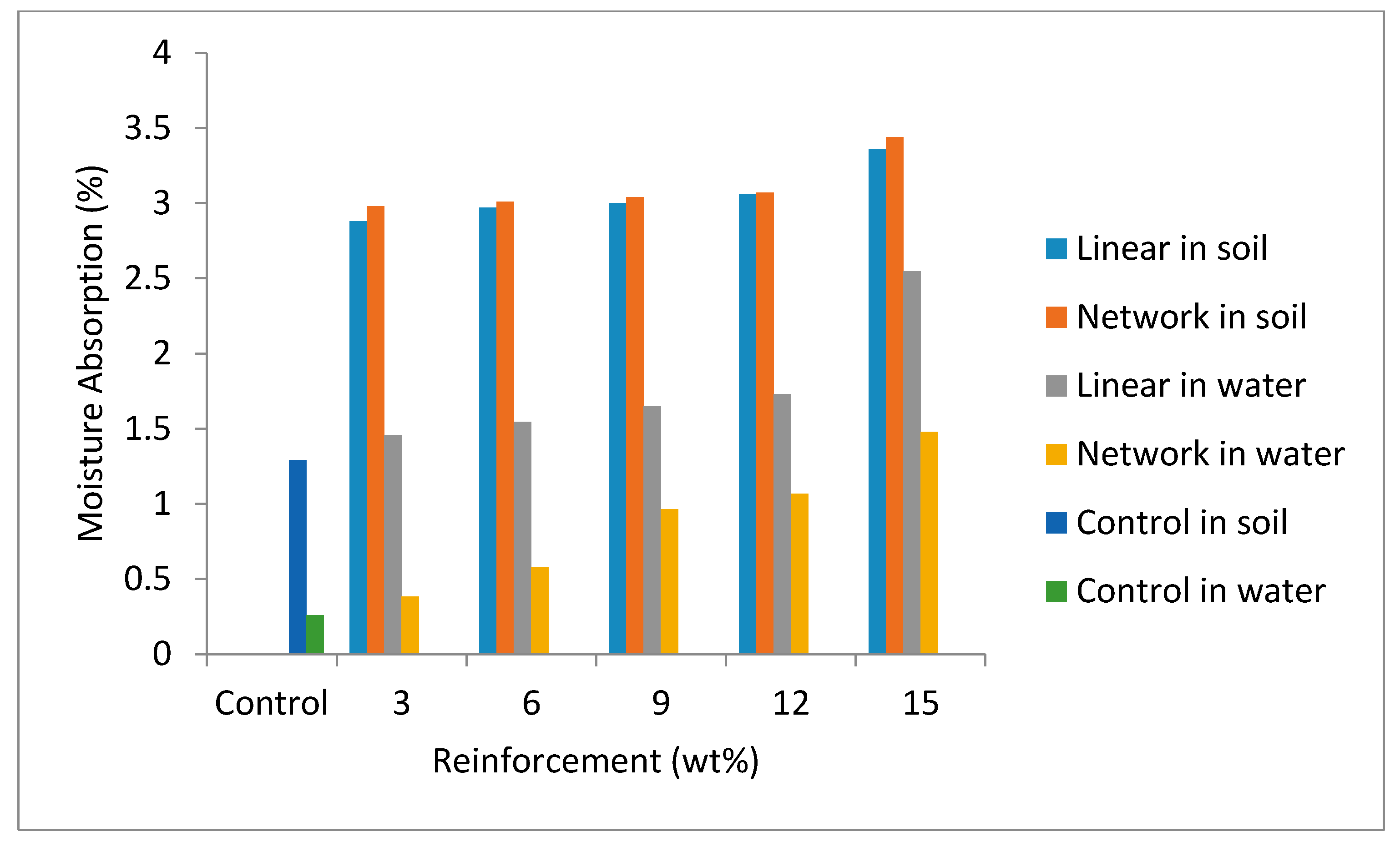
© 2020 by the authors. Licensee MDPI, Basel, Switzerland. This article is an open access article distributed under the terms and conditions of the Creative Commons Attribution (CC BY) license (http://creativecommons.org/licenses/by/4.0/).
Share and Cite
Oladele, I.O.; Ayanleye, O.T.; Adediran, A.A.; Makinde-Isola, B.A.; Taiwo, A.S.; Akinlabi, E.T. Characterization of Wear and Physical Properties of Pawpaw–Glass Fiber Hybrid Reinforced Epoxy Composites for Structural Application. Fibers 2020, 8, 44. https://doi.org/10.3390/fib8070044
Oladele IO, Ayanleye OT, Adediran AA, Makinde-Isola BA, Taiwo AS, Akinlabi ET. Characterization of Wear and Physical Properties of Pawpaw–Glass Fiber Hybrid Reinforced Epoxy Composites for Structural Application. Fibers. 2020; 8(7):44. https://doi.org/10.3390/fib8070044
Chicago/Turabian StyleOladele, Isiaka Oluwole, Oluwaseun Temilola Ayanleye, Adeolu Adesoji Adediran, Baraka Abiodun Makinde-Isola, Anuoluwapo Samuel Taiwo, and Esther Titilayo Akinlabi. 2020. "Characterization of Wear and Physical Properties of Pawpaw–Glass Fiber Hybrid Reinforced Epoxy Composites for Structural Application" Fibers 8, no. 7: 44. https://doi.org/10.3390/fib8070044
APA StyleOladele, I. O., Ayanleye, O. T., Adediran, A. A., Makinde-Isola, B. A., Taiwo, A. S., & Akinlabi, E. T. (2020). Characterization of Wear and Physical Properties of Pawpaw–Glass Fiber Hybrid Reinforced Epoxy Composites for Structural Application. Fibers, 8(7), 44. https://doi.org/10.3390/fib8070044





